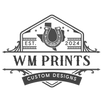The world of manufacturing is constantly evolving. In recent years, 3D printing has emerged as a revolutionary technology with the potential to redefine how products are created and customized. But is 3D printing truly the future of customized manufacturing? Let's explore the possibilities.
The Rise of 3D Printing
3D printing, also known as additive manufacturing, allows for the creation of three-dimensional objects from a digital file. This is accomplished by layering materials in sequence until the desired shape is achieved. This transformative technology offers numerous benefits, particularly when it comes to customization.
Why Customized Manufacturing?
Customized manufacturing allows producers to tailor products to individual specifications, offering a level of personalization that is often unattainable with traditional mass production methods. This customization can range from simple modifications to entirely bespoke creations.
Benefits of 3D Printing in Customized Manufacturing
- Design Freedom: 3D printing enables intricate designs that may be impossible to achieve with conventional methods. This freedom allows for more creativity in developing new products tailored to specific needs.
- Cost-Effective Production: Because 3D printing eliminates the need for expensive molds and tools, it can be a cost-effective approach for producing custom items, especially in small quantities.
- Speed and Efficiency: Traditional manufacturing processes can be time-consuming, particularly when alterations are needed. 3D printing can significantly reduce production time, as changes can be made easily within the design file.
- Sustainability: By using only the necessary amount of material, 3D printing is more environmentally friendly, minimizing waste that typically arises from subtractive manufacturing processes.
Applications in Custom Manufacturing
A wide array of industries are already harnessing the potential of 3D printing for customized manufacturing. One notable application can be found within the realm of personal equipment and tools.
Example: Customized Tool Holders
Customized tool holders are an excellent example of how 3D printing can be utilized to enhance productivity and organization. For instance, the Lyman Type Prep Tools Holder is designed to meet specific organizational needs for precision tools. Such products exemplify how 3D printing can provide tailored solutions that enhance functionality and efficiency within a workspace.
Challenges and Considerations
While the potential for 3D printing in customized manufacturing is vast, there are challenges to consider, such as the ongoing evolution of 3D printing materials, the optimization of production speed, and the need for widespread adoption of 3D design skills.
Conclusion
The future of customized manufacturing likely includes 3D printing as a cornerstone technology. It provides innovative paths for creating tailored solutions at a fraction of the cost, time, and environmental impact associated with traditional approaches. As 3D printing technology continues to advance, its role in shaping personalized manufacturing will only grow stronger. Visit WM Prints to explore more examples of how 3D printing is utilized in customized manufacturing solutions.





